Airframes
Benevolens Magister
Me and my mate Mick managed to get to the RAF Museum, Cosford yesterday, to take advantage of the open days of the Sir Michael Beetham Conservation Center, open (free, to Museum Members, and to the general public for a £5 donation), for three hours per day, for one week only.
Last year, we were delayed on the way there, and only managed to get 15 minutes in the Center before it closed, but I managed to get some photos of the Wellington and Hampden, which I posted at the time.
This time, we arrived early enough to have a good mooch around and, apart from seeing some progress on the two aircraft mentioned above, we were able to view the conservation work done to date on the Dornier Do17Z, raised from the Goodwin Sands in June last year, after being shot down during the Battle of Britain.
The Dornier has taken priority, resulting in slower progress on the long-term work schedule for the two RAF bombers, and the fuselage, wings and engines etc, have spent a year in the polythene 'hydration tunnels', where they were treated to a constant application of a citric acid solution, slowly giving way to water, in a specially - researched treatment programme, intended to prevent further corrosion, removal of marine 'deposits', and assist in the conservation of this, the World's only extant 'Flying Pencil'.
The fuselage, part of the tail assembly, and the engines and some other components, have now been moved indoors into the center's main workshop hangar, and we were able to inspect at close-range some of the work of conservation and preservation, both on the major airframe sections, damaged when they were raised from the sea bed where they lain for 73 years, and separate components such as guns, fuel cells, and engine, undertaken by a dedicated team of volunteers and apprentices.
Although the major components may at first sight look like a pile of scrap, the skilled work force have carried out some really superb conservation and restoration work, and this is abundantly clear on some of the smaller items, for example the fuel pumps seen in one of the photos, or those larger components, such as the engines and prop, which were on display, with the team on hand to answers questions and provide background information on the work, and the processes involved to date.
In contrast, and more recognisable as an aircraft, the Wellington is undergoing intense restoration work, including a complete removal and recovering of the fabric, having been on static display at Hendon for many years, and this is due to last a further four years.
The Hampden, on the other hand, a TB Mk1, spent 70 years lying in the open on the Siberian tundra, having been shot down on a Russian convoy patrol, and then suffering the effects of the elements, and the local population, when it gained a few more bullet holes, and had parts removed to be 'recycled' as needed by the locals, including slices of rubber from the landing gear tyres, used to make new soles for the footware of the hunters, traders and travellers of the area !
The Conservation Centre staff spent quite some time in identifying which bullet holes were inflicted by the Luftwaffe, and which were the result of enthusiastic target practice by the locals!
During this time, it was established that a single German 7.92mm round had entered the fuselage and penetrated the radio, causing a fire.
The following photos, taken yesterday (Friday, 14th November), should give some idea of the superb standard of work being carried out in the Centre, and note that the Dornier fuselage section is inverted, with the view through towards the rear of the cockpit.
I'd like to thank the staff of the Sir Michael Beetham Conservation Centre, both for the excellent work they do, and for providing the opportunity to view their work, and talk to them about these on-going projects, as well as the staff of the RAF Museum, Cosford, for their help in allowing access to aircraft for detail photography in the main display hangars, later in the day.
Last year, we were delayed on the way there, and only managed to get 15 minutes in the Center before it closed, but I managed to get some photos of the Wellington and Hampden, which I posted at the time.
This time, we arrived early enough to have a good mooch around and, apart from seeing some progress on the two aircraft mentioned above, we were able to view the conservation work done to date on the Dornier Do17Z, raised from the Goodwin Sands in June last year, after being shot down during the Battle of Britain.
The Dornier has taken priority, resulting in slower progress on the long-term work schedule for the two RAF bombers, and the fuselage, wings and engines etc, have spent a year in the polythene 'hydration tunnels', where they were treated to a constant application of a citric acid solution, slowly giving way to water, in a specially - researched treatment programme, intended to prevent further corrosion, removal of marine 'deposits', and assist in the conservation of this, the World's only extant 'Flying Pencil'.
The fuselage, part of the tail assembly, and the engines and some other components, have now been moved indoors into the center's main workshop hangar, and we were able to inspect at close-range some of the work of conservation and preservation, both on the major airframe sections, damaged when they were raised from the sea bed where they lain for 73 years, and separate components such as guns, fuel cells, and engine, undertaken by a dedicated team of volunteers and apprentices.
Although the major components may at first sight look like a pile of scrap, the skilled work force have carried out some really superb conservation and restoration work, and this is abundantly clear on some of the smaller items, for example the fuel pumps seen in one of the photos, or those larger components, such as the engines and prop, which were on display, with the team on hand to answers questions and provide background information on the work, and the processes involved to date.
In contrast, and more recognisable as an aircraft, the Wellington is undergoing intense restoration work, including a complete removal and recovering of the fabric, having been on static display at Hendon for many years, and this is due to last a further four years.
The Hampden, on the other hand, a TB Mk1, spent 70 years lying in the open on the Siberian tundra, having been shot down on a Russian convoy patrol, and then suffering the effects of the elements, and the local population, when it gained a few more bullet holes, and had parts removed to be 'recycled' as needed by the locals, including slices of rubber from the landing gear tyres, used to make new soles for the footware of the hunters, traders and travellers of the area !
The Conservation Centre staff spent quite some time in identifying which bullet holes were inflicted by the Luftwaffe, and which were the result of enthusiastic target practice by the locals!
During this time, it was established that a single German 7.92mm round had entered the fuselage and penetrated the radio, causing a fire.
The following photos, taken yesterday (Friday, 14th November), should give some idea of the superb standard of work being carried out in the Centre, and note that the Dornier fuselage section is inverted, with the view through towards the rear of the cockpit.
I'd like to thank the staff of the Sir Michael Beetham Conservation Centre, both for the excellent work they do, and for providing the opportunity to view their work, and talk to them about these on-going projects, as well as the staff of the RAF Museum, Cosford, for their help in allowing access to aircraft for detail photography in the main display hangars, later in the day.
Attachments
-
 Dorn 1.jpg165.4 KB · Views: 202
Dorn 1.jpg165.4 KB · Views: 202 -
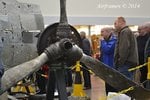 Dorn 2.jpg130.5 KB · Views: 203
Dorn 2.jpg130.5 KB · Views: 203 -
 Dorn 5.jpg142.3 KB · Views: 207
Dorn 5.jpg142.3 KB · Views: 207 -
 Dorn 6.jpg113 KB · Views: 206
Dorn 6.jpg113 KB · Views: 206 -
 Dorn 3.jpg138.3 KB · Views: 223
Dorn 3.jpg138.3 KB · Views: 223 -
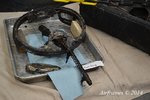 Dorn 4.jpg126 KB · Views: 214
Dorn 4.jpg126 KB · Views: 214 -
 Dorn 7.jpg172 KB · Views: 196
Dorn 7.jpg172 KB · Views: 196 -
 Dorn 8.jpg163.6 KB · Views: 211
Dorn 8.jpg163.6 KB · Views: 211 -
 Dorn 9.jpg161.3 KB · Views: 210
Dorn 9.jpg161.3 KB · Views: 210 -
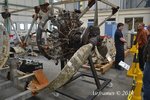 Dorn 10.jpg168.2 KB · Views: 203
Dorn 10.jpg168.2 KB · Views: 203 -
 Dorn 11.jpg158 KB · Views: 209
Dorn 11.jpg158 KB · Views: 209 -
 Dorn 12.jpg145 KB · Views: 207
Dorn 12.jpg145 KB · Views: 207 -
 Dorn 13.jpg138.3 KB · Views: 207
Dorn 13.jpg138.3 KB · Views: 207 -
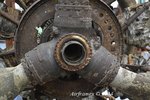 Dorn 14.jpg156.6 KB · Views: 215
Dorn 14.jpg156.6 KB · Views: 215 -
 Dorn 15.jpg167 KB · Views: 210
Dorn 15.jpg167 KB · Views: 210 -
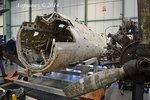 Dorn 16.jpg164.2 KB · Views: 212
Dorn 16.jpg164.2 KB · Views: 212 -
 Dorn 17.jpg185 KB · Views: 204
Dorn 17.jpg185 KB · Views: 204 -
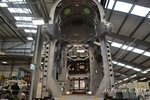 Dorn 18.jpg159.9 KB · Views: 193
Dorn 18.jpg159.9 KB · Views: 193 -
 Dorn 19.jpg132.3 KB · Views: 209
Dorn 19.jpg132.3 KB · Views: 209 -
 Dorn 20.jpg146.1 KB · Views: 215
Dorn 20.jpg146.1 KB · Views: 215 -
 Dorn 21.jpg147.7 KB · Views: 210
Dorn 21.jpg147.7 KB · Views: 210 -
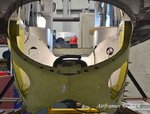 Dorn 22.jpg129.9 KB · Views: 212
Dorn 22.jpg129.9 KB · Views: 212 -
 Dorn 23.jpg128.5 KB · Views: 200
Dorn 23.jpg128.5 KB · Views: 200 -
 Dorn 24.jpg165.3 KB · Views: 213
Dorn 24.jpg165.3 KB · Views: 213 -
 Dorn 25.jpg170.1 KB · Views: 198
Dorn 25.jpg170.1 KB · Views: 198 -
 Dorn 26.jpg140.9 KB · Views: 200
Dorn 26.jpg140.9 KB · Views: 200 -
 Dorn 27.jpg159.3 KB · Views: 197
Dorn 27.jpg159.3 KB · Views: 197 -
 Dorn 28.jpg149 KB · Views: 210
Dorn 28.jpg149 KB · Views: 210 -
 Dorn 29.jpg135.8 KB · Views: 186
Dorn 29.jpg135.8 KB · Views: 186 -
 Dorn 30.jpg133.4 KB · Views: 210
Dorn 30.jpg133.4 KB · Views: 210
